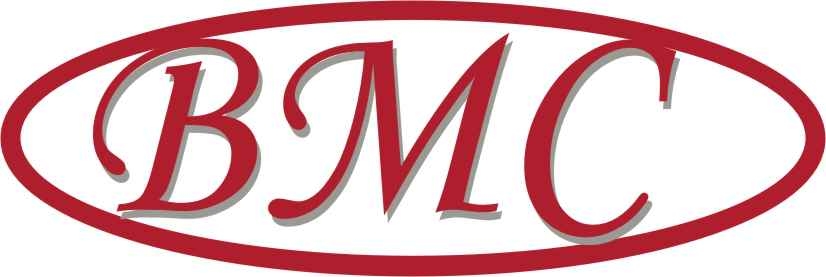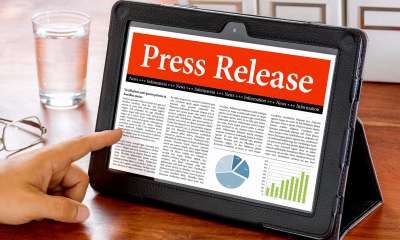Many so-called experts say press releases are dead; of course, Time Magazine claimed that God is Dead, and you can see where that got them, so don’t write off press releases just yet. Press Releases are not dead, but they need help. Their success depends upon how you write them and how you present them to the news media.
When you write press releases, keep a couple of things in mind.
First, important news or statements of facts or opinions should be attributed to someone, as in, “Press releases are not dead – not if you know how to write them and deliver them,” according to Ned Barnett, CEO at Barnett Marketing Communications. Never assert an important fact – let alone an opinion – without attribution.
Next, there should be substance to your press release. It shouldn’t be vacuous PR hype. Part of this involves making sure that the substance of the release actually relates to the media target, and to their audience. If you offer something important to that audience, the media decision-makers will be much more favorably inclined to your release than if it’s a puff-piece about how great you (or your book) happens to be.
Finally, write the press release as if it was a news story, using the “inverted pyramid” and the “Five Ws and an H” approach. That’s journalism-speak for putting the most important news first, and answering the questions readers want to have answered.
So, an inverted pyramid means that the most important information is in the first paragraph, and the second-most important information is in the second paragraph, and so forth. This allows an editor who has space constraints to cut the article (i.e., your press release) at any point, confident that the most important information will still appear in the published article.
Those Five Ws and an H are simple: Who, what when, where, why and how. Answer those questions, while using the inverted pyramid, and you’ll have a press release that – if it contains real news of interest to the media’s audience – could wind up being used, instead of automatically discarded.
Remarkably, though this “secret” has been known since the days Ivy Lee and Edward Bernays, who first made their mark on PR in America during the Great War a hundred years ago, it is still routinely ignored by professional PR “experts,” which is why more than 90 percent of all press releases are junked, usually after only a brief scan at the lead sentence, which should be newsworthy but usually comes across as self-serving and filled with hype.
The good news is that the remaining ten percent of press releases directly or indirectly lead to 80 percent of all the items appearing in your daily newspaper – and they have a similar impact on cable news, local TV news, talk radio, magazines and online publications’ news.
Here’s a hypothetical example that includes everything a press release should contain.
|
For Immediate Release For More information, contact Ned Barnett 702-561-1167 or ned@barnettmarcom.com
Survey Finds That Attorneys Who Write Books Generate More Press Coverage and Attract More Clients Books Impart Credibility For Their Authors – Earn Reporters’ Respect and Prospects’ Interest Las Vegas, (today’s date): “According to a just-completed survey of 13,000 private-practice attorneys across America, attorneys who write books about their law practices are far more likely to be cited by news media as experts in matters of the law,” according to Ned Barnett, author of Write Now!, a book about writing and using books to gain business advantage. “In addition, this survey found that attorneys who share their books with their clients are more likely to generate referrals, while those who hand out autographed books to prospects signed more new long-term clients,” Barnett explained. This survey, developed by Barnett – which can be viewed here (URL) – queried attorneys in private practice about practice-marketing best practices. Writing books – then leveraging them with the news media and with clients and prospects – came in at the top of the list of innovative practice-building tools and techniques, with 37 percent of respondents choosing books as their preferred marketing tool. Five other marketing approaches generated significant favorable responses. “I used my book on how to survive unexpected legal crises to land a regular “week in review” segment on a local TV station’s 5 o’clock news program, where I provide insights into the most important local court cases,” one attorney commented. “This then led to me becoming a regular source for that station’s national affiliate. Along with my book, that press coverage has helped grow my practice by 32 percent, allowing me to help many others deal with legal crises.” Along with writing and leveraging books, Barnett noted that the survey identified five other marketing best practices, including giving talks at local civic clubs, donating professional services (such as writing wills) to charity auctions, creating digital newsletters focusing on trends in the law, providing legal insight on local TV news programs and conducting high-profile pro-bono legal work for worthy causes. About Ned BarnettBarnett, the CEO of Barnett Marketing Communications (hot link), has a long history helping private practice professionals – doctors, attorneys and CPAs – to grow their professional practices. He conducted this survey from January 14 to January 28 to help identify best practices. His Amazon bestselling book, Write Now! Writing YOUR Book – to Attract New Clients and Make You a News Media Expert, tells attorneys, entrepreneurs and other professionals how to write – or have written – a book that will leverage their business with the news media and with prospects. Barnett can be reached for interviews about this survey or his book at 702-561-1167 or ned@barnettmarcom.com. ### |
To make this a learning tool, consider the following:
Start with the embargo notice – in this case, For Immediate Release. This tells the media that this story isn’t on-hold for a specific date or time, as are some corporate announcements regarding profit-and-loss information releases
Follow with contact information, for obvious reasons
Make your case in the headline – indentify that a survey is involved, and what the survey found
Expand on that theme in the sub-head (second headline).
Dateline tells reporters where you’re based and the date (and time, if important) the release was issued
Lead with the most important news, attributed to a credible source. If the first paragraph is the only thing used, all of the most important information (the survey, the findings, and the source of the information – including the name of my own book)
Note that the lead paragraph answers this subject’s Five Ws and an H:
Who – Ned Barnett, author and marketerWhat – a survey of 13,000 attorneys
- When – immediately, just now
- Where – National, lawyers from across the country were surveyed
- Why – discover what techniques work in marketing private practice attorneys
- How – compiling the survey’s results
The second paragraph has the second most-important news, including (in this case) where to view the survey
The third paragraph provides supporting human interest information – a mini-case study that confirms the survey’s overall conclusions
The fourth paragraph wraps up the other findings of the survey – this may pique reporters’ interest in discovering more about the survey, which could lead to a one-on-one interview
The final paragraph, always labeled “about (the source),” provides background information – and repeats contact information. This is for use by the reporters, and would not be published if the release is used as-is.
The second key to success involves delivering the press release. To do this right, you need a delivery system. There are commercial services that will deliver press releases for a price, which varies based on the service and, in some cases, based on the length of the release. Check with colleagues or experts before selecting a service – make sure that the coverage is real, rather than illusory. Sometimes, press releases are “used” by a media outlet’s website, but in a location that is not easily searchable, either on Google or on the outlet’s own website search function. In those cases, while the release is technically published, it will do you no measurable good.
Success comes when you place a valid-news press release in the hands of a news media decision-maker – a reporter, an editor, a producer or guest booker – in a way that attracts attention and generates results. For this, you need a topical and up-to-date media list, as well as a short, tight “pitch” email, one that uses its subject line to create excitement, its first sentence to grab attention, and the balance of its short paragraph to close the deal. Then, cut-and-paste the press release BELOW your signature (sig) file. You do not want to send an attachment unless you’re invited to do so, because of a legitimate fear of viruses.
Here’s a sample of such a pitch:
| SUBJECT: Survey Says … To Grow Their Practices, Lawyers Should Write Books
BODY: A just-completed national survey identified the most important tools to help attorneys attract new business. At the top of the list is a book, written and published by the attorney. This book can be leveraged to attract new clients while also enhancing the attorneys’ credibility with the news media. In addition to being seen as credible experts by prospects, authors are rightly seen by prospects news media decision-makers as topical experts able to put breaking news into perspective for radio, TV, cable, print or online audiences. For more information on the survey, or to see the survey results, please check out the press release included below my contact information (scroll down). SIG FILE PRESS RELEASE |
Note that the subject line has a play-on-words from the popular TV game show Family Feud – while it might not grab everybody’s attention as a pun, it does accurately reflect the release’s subject.
Beyond that, this press release pitch is straightforward and informative on the key issue – a just-completed survey with insights into what marketing works best for private practice attorneys. Just enough, if they cover legal or business issues, to get them to scroll down and check out the release.


Recent Comments